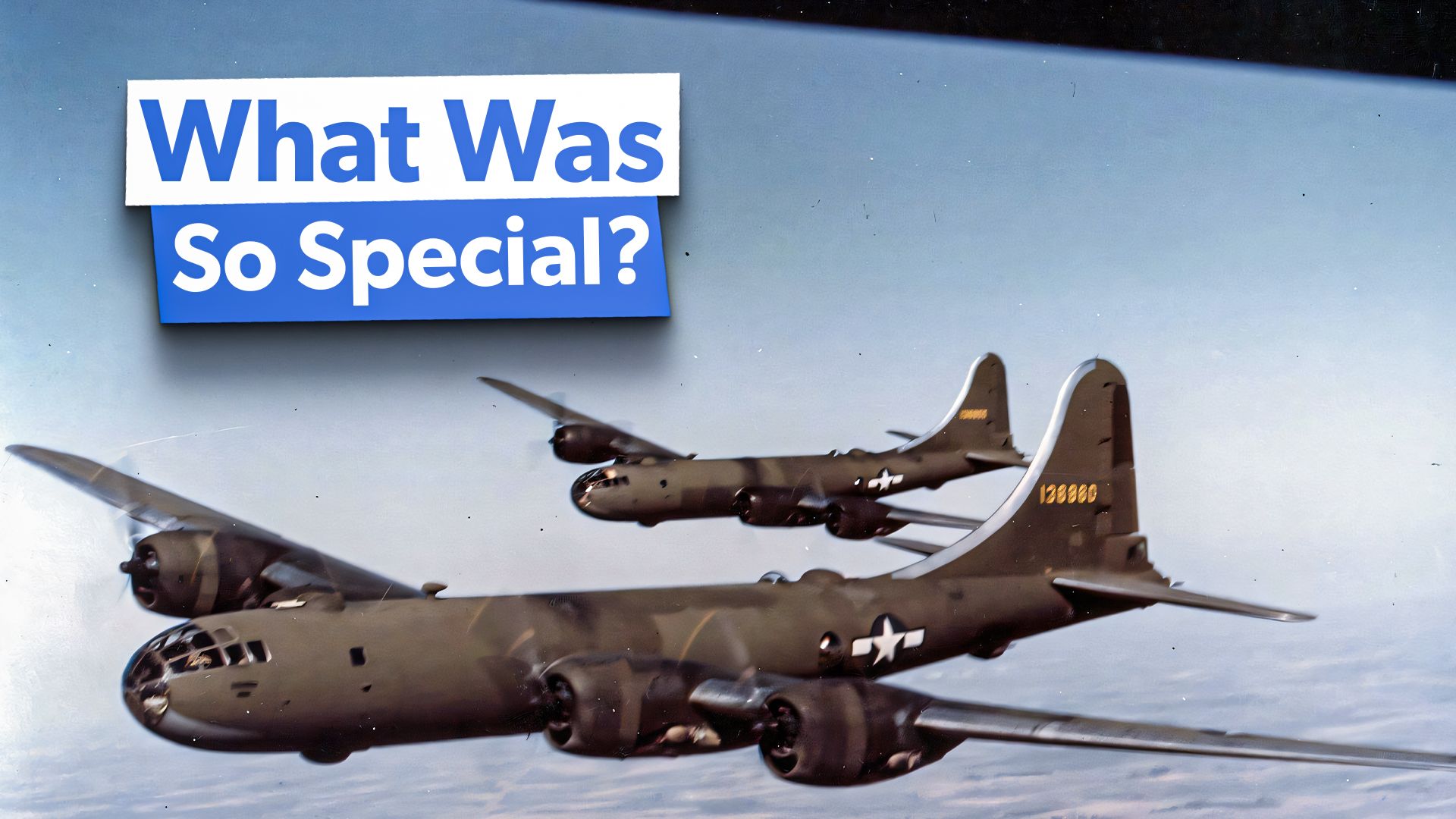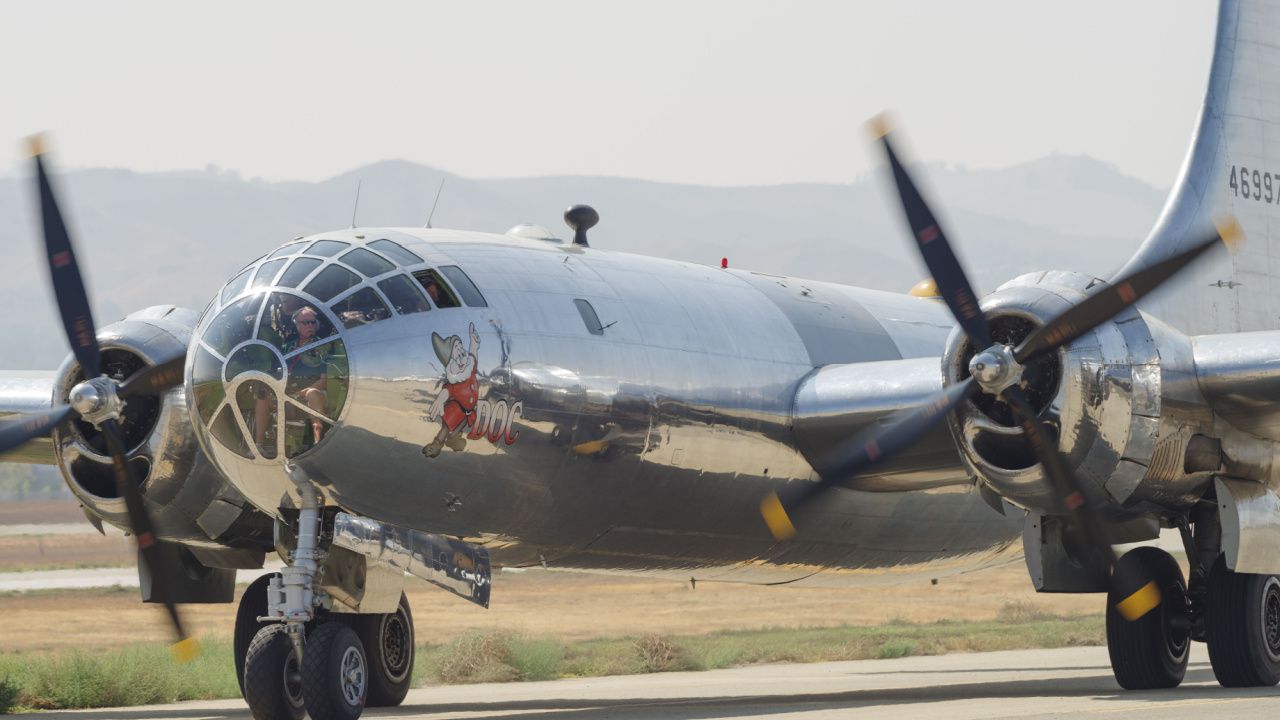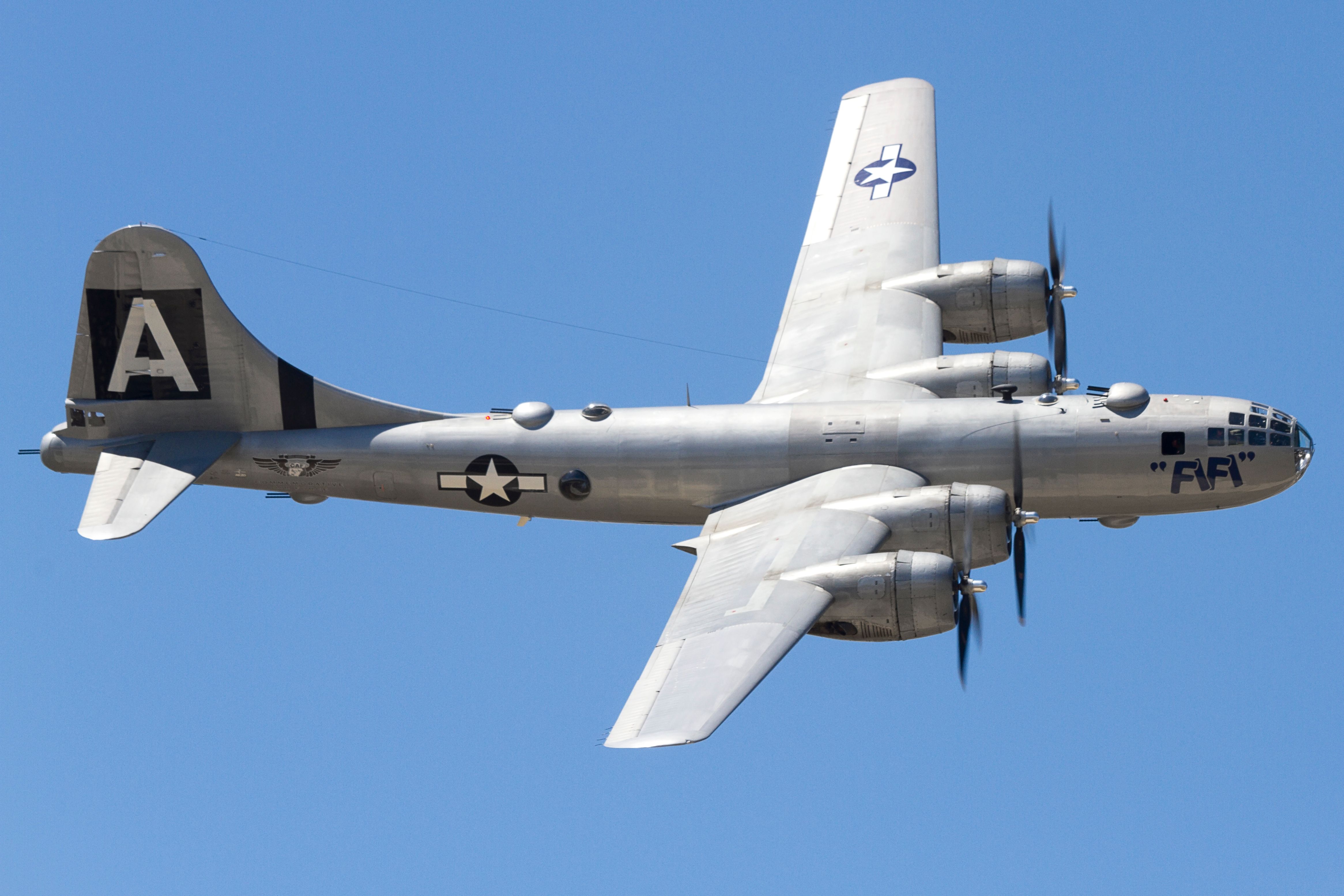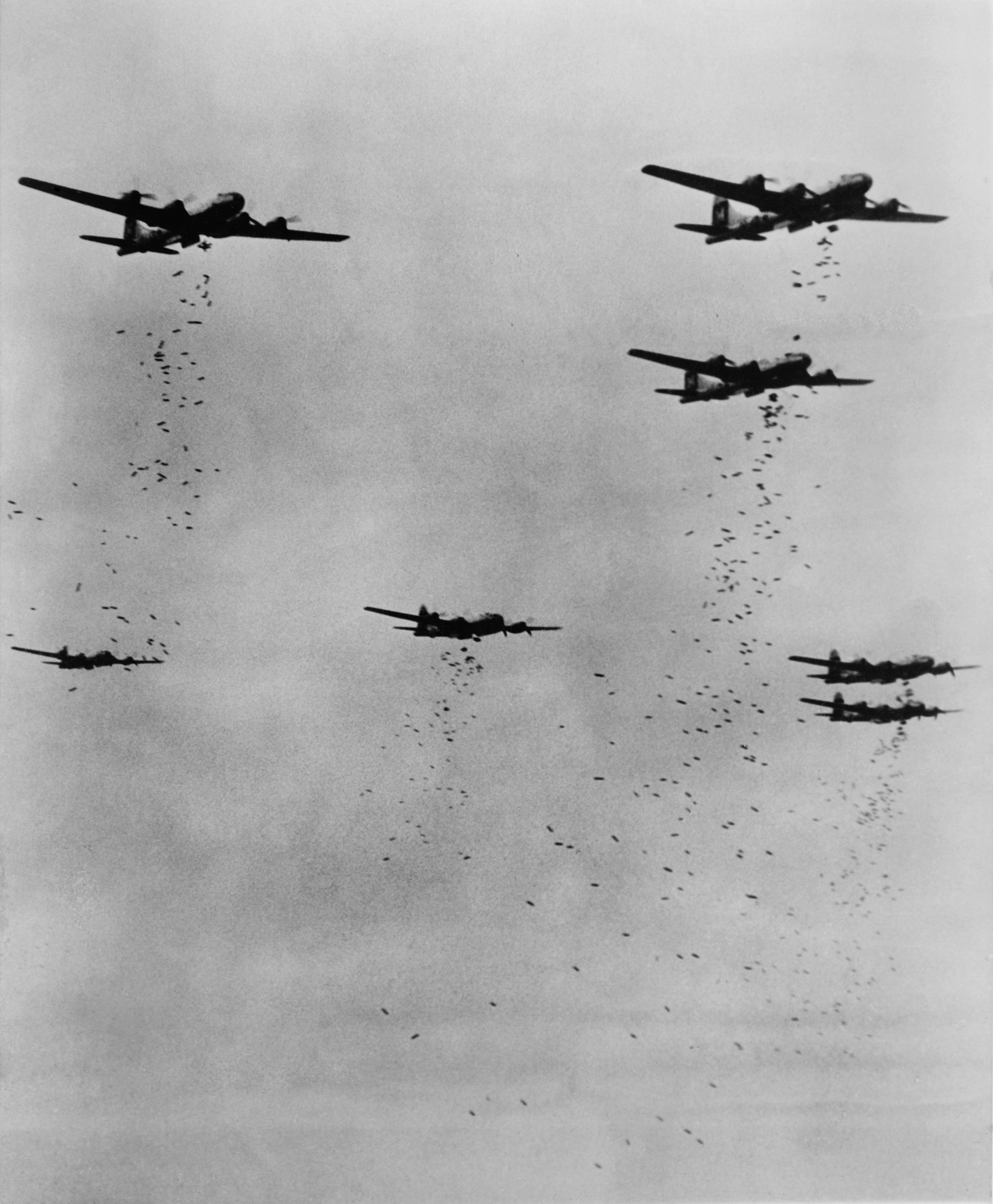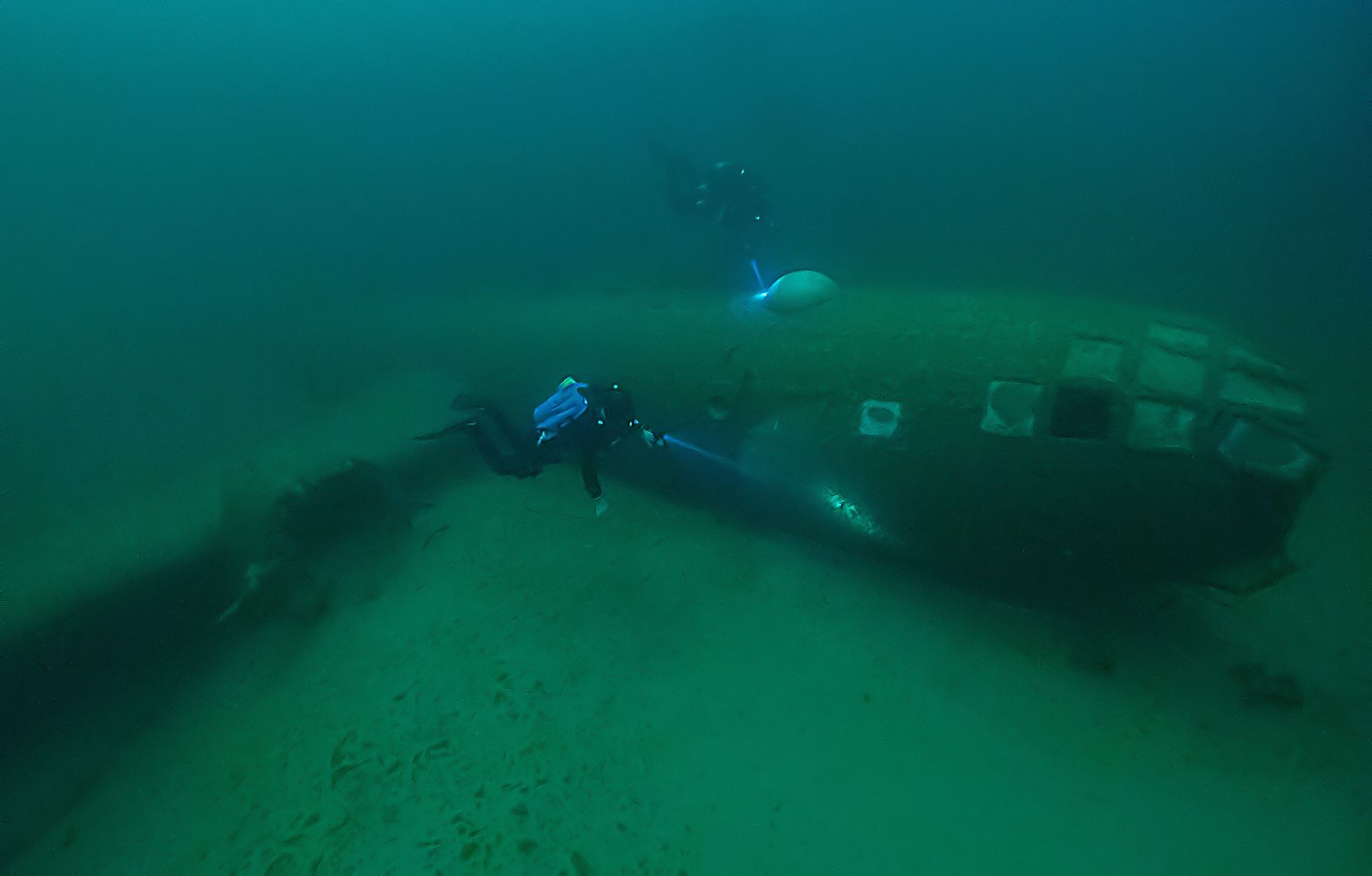Summary
- B-29 Superfortress was the most costly military project of WW2
- B-29 was the most sophisticated bomber, featuring advanced innovations
- The B-29 had multiple roles after WW2, including aerial tankers for the Korean War
The Boeing B-29 Superfortress was the single-largest military project of any nation in World War II (even more expensive than the Manhattan Project). The B-29 was a revolutionary new bomber with a number of novel innovations. It was used to flatten entire Japanese cities and drop atomic bombs on Japan, ending the war. Following its entry into World War II, the United States switched over to a total war economy. The production and sale of new civilian cars were banned, and the nation’s industry was fully dedicated to the war effort.
The most expensive project of the war
The United Kingdom and the United States were the heavyweights of heavy bombers in the war. While the British led the world in bomber production early in the war, it was soon overshadowed by the incredible industrial might of the United States (German, Soviet, Japanese, and Italian heavy bomber production was comparatively lackluster). The United States churned out thousands of B-17s and B-24s before producing almost 4,000 Superfortresses.
Photo: Angel DiBilio l Shutterstock
Despite their impressive production numbers, something bigger and more capable than the B-17s and B-24s were needed. So, in 1940, the Boeing B-29 was designed to eventually replace the B-17s and B-24s. The B-29 project cost the United States $3 billion (compared to $1.9 billion for the Manhattan Project). The B-29 first flew in September 1942 and entered the war against Japan at the end of 1944.
|
B-29 Superfortress specs |
|
|---|---|
|
Weight: |
133,500 lbs max. |
|
Length: |
99 feet |
|
Wing Span: |
141 feet 3 inches |
|
Cost: |
$639,000 |
|
Engines: |
4x Wright R-3350s of 2,200 hp |
|
Armament: |
10x .50-cal. machine guns, 1x 20mm cannon, 20,000 lbs of bombs |
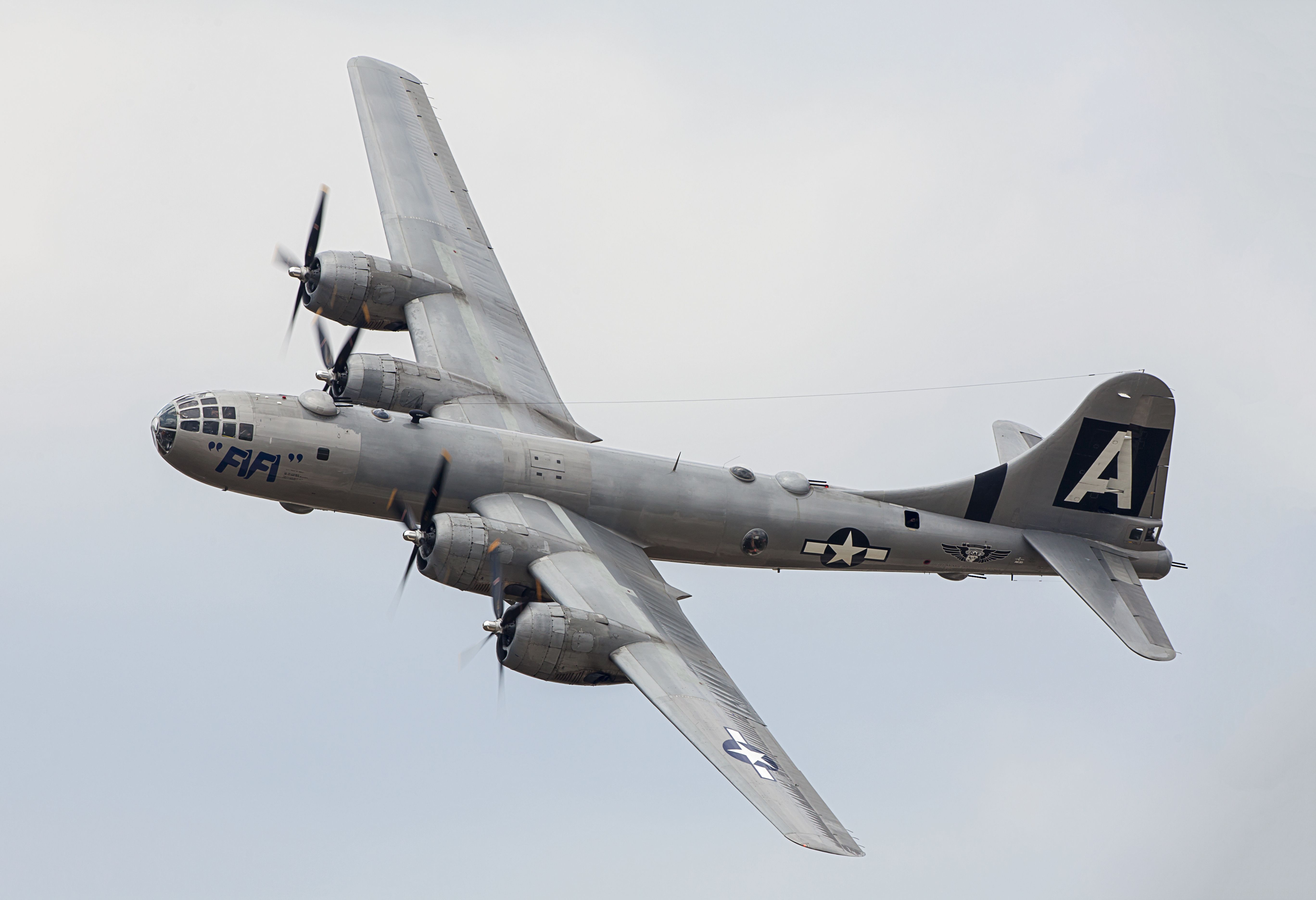
Related
How Many Variants Of The ‘Superfortress’ B-29 Bomber Were There?
There were five prototype and production variants, plus at least seven modified variants post-war.
Why the B-29 Superfortress was special
The B-29 Superfortress was easily the most capable bomber of the war. It was also the heaviest bomber of its day and could fly faster, carry more payload, and reach higher altitudes than any other bomber of the era.
“Boeing’s B-29 Superfortress was the most sophisticated, propeller-driven, bomber to fly during World War II, and the first bomber to house its crew in pressurized compartments. Boeing installed very advanced armament, propulsion, and avionics systems into the Superfortress.” National Air and Space Museum
Photo: BlueBarronPhoto | Shutterstock
Notable Superfortress innovations & characteristics:
- Pressurized cabins
- Remotely operated guns
- Large payload
- High speed
- High service ceiling
- Refined aerodynamics
- Computerized sights
- Advanced radar equipment and avionics
The B-29 was also notable for having pressurized crew cabins, remotely-controlled gun turrets, and dual bomb bays with alternating bomb releases. The Superfortress was designed with refined aerodynamics from significant wind tunnel testing. The pressurized cabin made flying at high altitudes of over 18,000 feet much more comfortable for the crew (most of the aircraft was not pressurized).
|
B-29 Superfortress performance |
|
|---|---|
|
Cruising speed: |
220 mph |
|
Max speed: |
357 mph |
|
Range: |
3,700 miles |
|
Service ceiling: |
33,600 feet |
The National Air and Space Museum notes that the remote operation of the Superfortress’s machine guns was a “true innovation.” Gunners could aim the guns using computerized sights and “each gunner could take control of two or more turrets to concentrate firepower on a single target.”
Bombing and navigation were aided by the AN/APQ-13 or AN/APQ-7 Eagle radar system that was installed on some of the aircraft. This was accurate enough to bomb through cloud layers even when the target was completely obscured. The AN/APG-15B airborne radar gun sighting system was mounted in the tail and helped gunners fire accurately during the night against enemy fighters. Superfortresses routinely carried up to 20 different types of radios and navigation devices.
Firebombing of Japan
B-29 Superfortresses were used to systematically bomb Japan in the latter part of the Pacific War, culminating with the dropping of nuclear bombs on Hiroshima and Nagasaki. They operated from bases in Saipan, Guam, and Tinian in the Mariana Islands captured during the island-hopping campaign. The B-29 would go on to be used in the Korean War of the 1950s.
Photo: Everett Collection | Shutterstock
However, high-altitude winds made it impossible to bomb Japan accurately – even with the help of bombing computers. With mediocre bombing results, Major General Curtis E. LeMay ordered the bombers to abandon tactical targets in Japan. Instead, they flew low at night, using incendiary bombs to firebomb Japanese cities.
This devastated much of Japan’s industrial and economic infrastructure but also resulted in the deaths of hundreds of thousands of civilians. Britannica estimates at least 800,000 died in these bombing raids, with “likely more” than 100,000 in the firebombing of Tokyo in a single night alone.
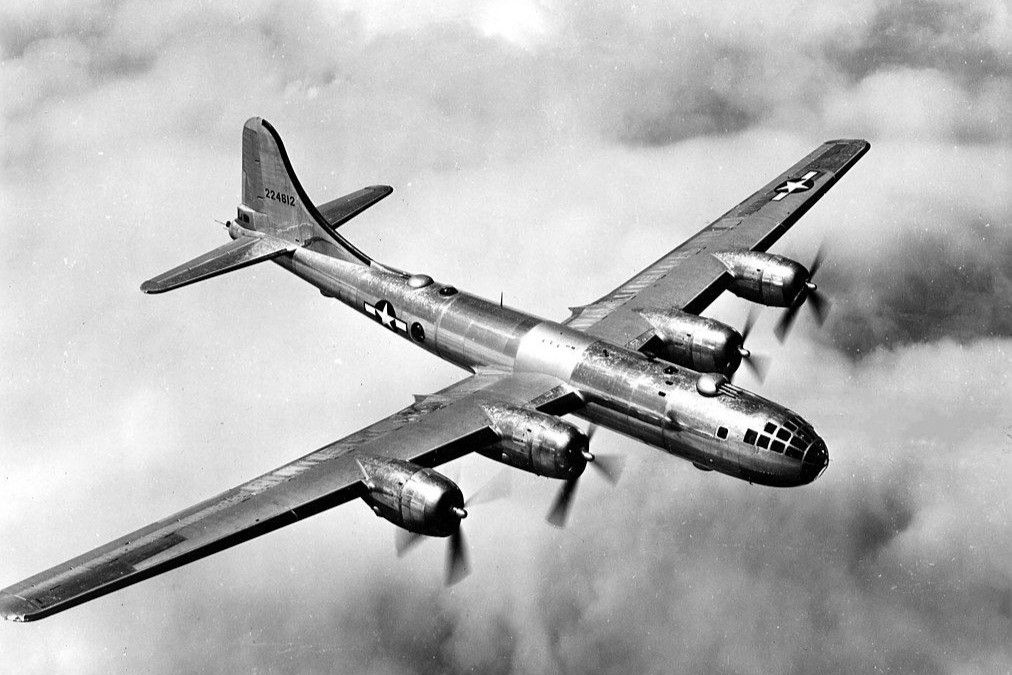
Related
World War II: Looking At The Boeing B-29 Superfortress’ Arrival In The China Burma India Theater
Operation Matterhorn required a herculean logistical effort that helped develop future airlift doctrine.
Later roles for the B-29 Superfortress
The Superfortress found a range of other roles, including aerial refueling, weather reconnaissance, search and rescue, and maritime patrol. The sunken Superfortress in Lake Mead crashed during a scientific mission. Later, they were adapted to be motherships carrying the Bell X-1 for the first supersonic flight. Some Superfortresses were converted to aerial tankers for the Korean War.
Photo: National Park Service
Two B-29 Superfortresses are still airworthy today and visitors can book air tours in them. They have now become symbols of American innovation and industrial power of the mid-twentieth century.

